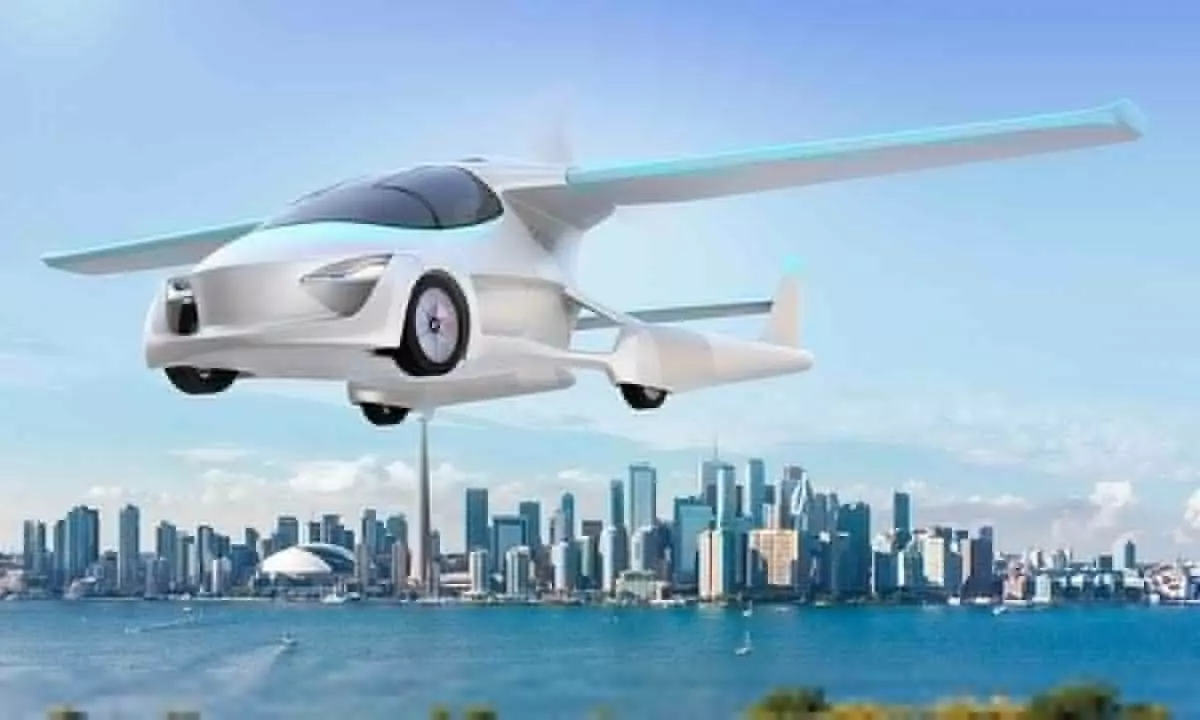Fascination for ‘flying’ cars getting closer to reality
Despite the excitement, engineering and regulatory challenges need to be addressed
image for illustrative purpose

For almost a century, people have been fascinated with cars that could fly. Many inventors have attempted to come up with a fantasy creation. Even Henry Ford created the Ford Flivver, a small flying machine, in 1926.
The fact of the matter is that although some flying cars actually saw light of the day, they could not succeed commercially. This fantasy has been pursued through movies and TV shows as well. People have recently invested a lot of money, up to $7 billion, into making electric flying cars.
The flying cars, called eVTOL, are powered by batteries like electric cars and do not produce pollution. Companies like Lilium, Volocopter, Ehang, Vertical Aerospace, and Joby Aviation build these flying cars.
"Where are the flying cars we were promised?" That was the poser in an invite for a press conference at the 2023 Consumer Electronics Show (CES). The invite showed a picture of a flying car with a promise to showcase a full-size, working model of a vehicle that could be both driven on the road and flown like a drone. ASKA, a company based in Los Altos, California, gave this assurance and promises to unveil its flying car prototype on January 4, 2023. The ASKA A5 is an electric vehicle about the size of an SUV. It can seat four people, travel at a top speed of 150 mph and cover 250 miles on a single charge. When ready to fly, the wings and six rotors unfold, allowing it to take off vertically or from a runway.
The company was taking deposits for A5 at the CES 2023 for inclusion their preorder list. The question asked all around, however, was about when ASKA would deliver A5 commercially.
The ASKA flying car prototype is powered by electric batteries and has a small gas engine for backup. It is about the size of a big SUV, with big wings and helicopter-like propellers. It can fit in a standard parking space and needs some space for vertical takeoff and landing. It can be charged at home or regular electric vehicle charging stations and the gas engine runs on premium gasoline. ASKA first showed its flying car in 2019 and started taking orders in 2021 with a plan to deliver the first one in 2026. Although flying cars are exciting, many engineering and regulatory challenges still need to be addressed.
Let's take a look at some of the other flying cars that are in the works:
1. Klein Vision AirCar: Engineered by BMW, this flying car was given an ‘Official Certificate of Airworthiness’ by the Slovak Transport Authority in early 2022 on completion of 70 hours of flight testing and over 200 takeoffs and landings.
2. PAL-V Liberty: If you have attended a motor show or a motoring event in the past decade, chances are that you have seen the PAL-V Liberty. The Dutch company announced that it was in production in 2018 and was fully certified by the European Union Aviation Safety Agency in February 2021. The first customer deliveries are expected in 2024.
3. AeroMobil 4.0: We have covered AeroMobil in the past, and even visited its headquarters when its 4.0 concept was unveiled. In 2018, the company released renders of version 5.0 of its flying car, but in 2021, an advertisement stated that the two-seat 4.0 would be available for driving and flying in 2023.
4. Terrafugia TF-X: Terrafugia was founded in Massachusetts in 2006 with the concept of the Transition. Geely acquired it in 2017. The company had previously shown the 200 mph TF-X for a future release.
5. Porsche x Boeing: Porsche and Boeing announced in 2019 that they were exploring the premium urban air mobility market. If you were to pick two companies to collaborate on a flying car, Porsche and Boeing would be high on the list.
6. Joby Aviation x Toyota: Another ground-based company looking to the skies is Toyota, which invested £300 million into flying hexacopter taxi start-up Joby Aviation in early 2020.
7. Renault AIR4: Although lack of wheels might make Renault's AIR4 not exactly a flying car, it is technically a Renault 4 that can take to the sky. This drone-style vehicle was created to commemorate Renault 4's 60th birthday in 2021.
Flying cars, which have been a pipedream for over 70 years, are now gradually getting closer to reality. Currently, the market is filled with companies experimenting with prototypes that resemble personal helicopters or large drones. Although the dream of owning a flying car has not yet come to fruition, many are hopeful that someday we will see roads filled with flying vehicles. The focus for now is on developing commuter taxis rather than personal flying cars. Despite this, the dream persists, and maybe very soon, we will see flying cars on our roads.
(The author is the Chairman and CEO of Brightcom Group)

